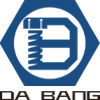The core difference between structural bolts and non-structural bolts lies in the mechanical role they play. Structural bolts are directly involved in the force transmission of buildings or mechanical systems, such as steel structure beam-column connections, bridge nodes and other key parts. Such bolts must meet strict standard specifications, and the strength grade is usually 8.8 or above. The tensile strength of the 10.9-grade structural bolts of M24 specifications is not less than 1040MPa, and the single bolt design load can reach 230kN. Non-structural bolts are mainly used in non-load-bearing scenarios such as equipment fixing and pipeline supports. The strength grade is mostly 4.8-6.8, and the ultimate load of the same specification is only 30%-50%.
Structural bolts generally use medium-carbon alloy steel, which is tempered to meet the standard hardness and ensure that the low-temperature impact energy of -40℃ is ≥27J. Non-structural bolts are mostly made of low-carbon steel, and the thickness of the surface galvanized layer meets the conventional anti-corrosion requirements. In industrial-grade corrosive environments, structural bolts need to be hot-dip galvanized or Dacromet-treated, and the salt spray tolerance requirement is >480 hours; ordinary galvanizing of non-structural bolts can cope with 240 hours of salt spray environment.
The installation control accuracy varies significantly. The construction of structural bolts must strictly follow the torque method or the angle method. The installation of non-structural bolts allows a torque deviation of ±15%, and there is no need to record process data. The connection surface of the structural bolts needs to be sandblasted to Sa2.5 level (roughness Ra=50-100μm), and the friction coefficient is ≥0.35; the contact surface of non-structural bolts is only required to be clean and oil-free.
Each batch of structural bolts must be 100% hardness tested and magnetic particle inspected, and a traceable number must be retained. Non-structural bolts, such as cabinet mounting bolts, fail only to cause local displacement, and are usually sampled for inspection.
Comparison of application scenarios:
Structural bolts: lateral force resistance nodes of super high-rise buildings, expansion joints of high-speed railway bridges
Non-structural bolts: HVAC pipe supports and hangers, electrical control box installation
Cost differences also reflect value positioning. The unit price of 10.9-grade structural bolts of the same specification is 2-3 times that of 4.8-grade non-structural bolts, but considering the structural safety redundancy, the use of non-structural bolts in key parts may increase the overall maintenance cost by more than 400%. In summary, structural bolts are used for key connections of load-bearing structures, and have extremely high requirements for strength, material, installation accuracy and testing; non-structural bolts are used for auxiliary fixation of non-load-bearing components, with relatively low requirements and more emphasis on cost efficiency. Correctly selecting the type of bolt according to the specific purpose is the basis for ensuring structural safety and reliability and achieving reasonable cost control.
Dabang Fasteners is a professional fastener manufacturer and supplier. The company has passed ISO9001/ISO14001/ISO45001/SGS certification, and the company’s products have also passed the national testing. If you cooperate with us, you will get professional advice and service, quality products, and competitive prices.
Come and contact us!
Post time: Jun-05-2025
